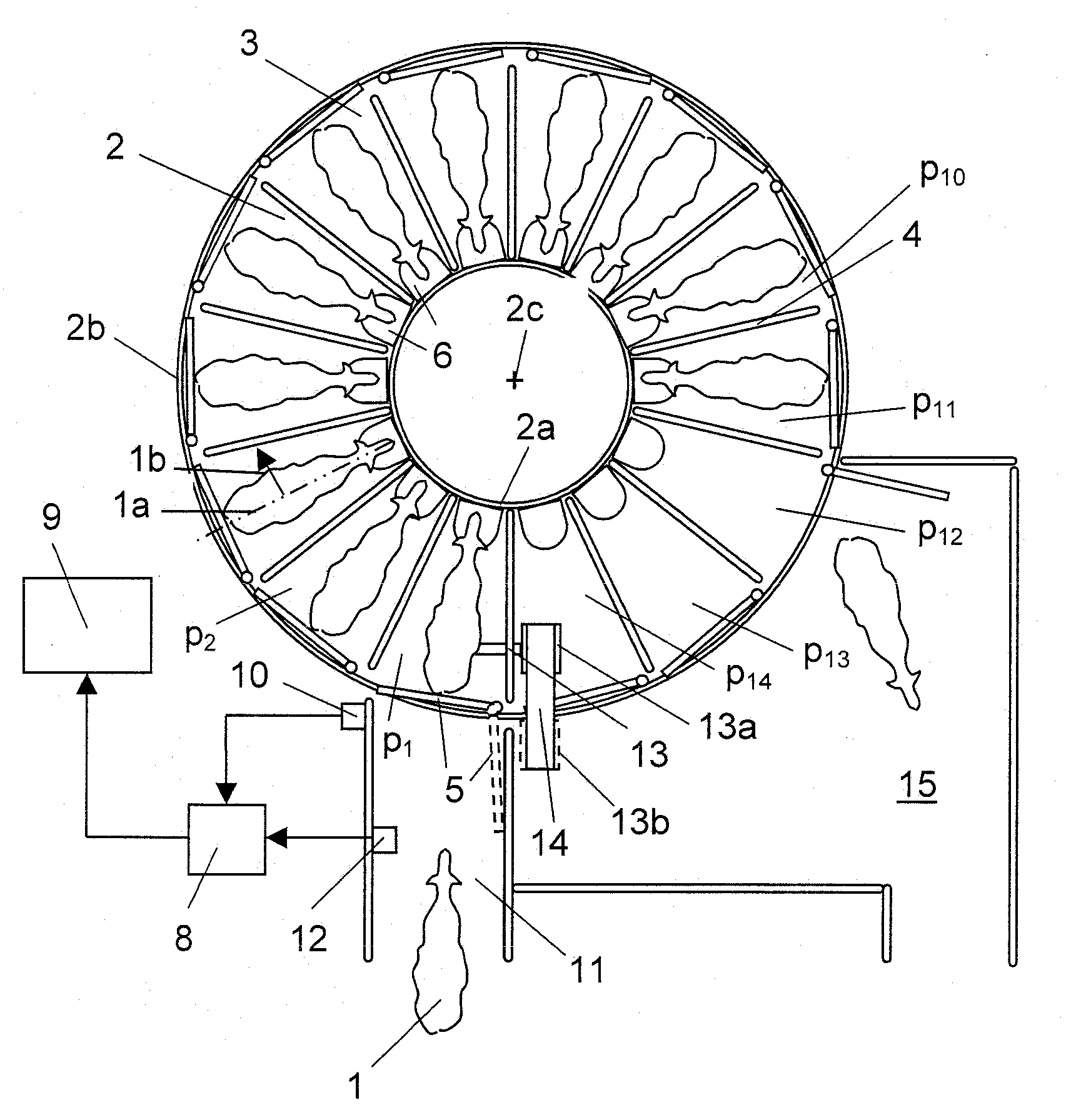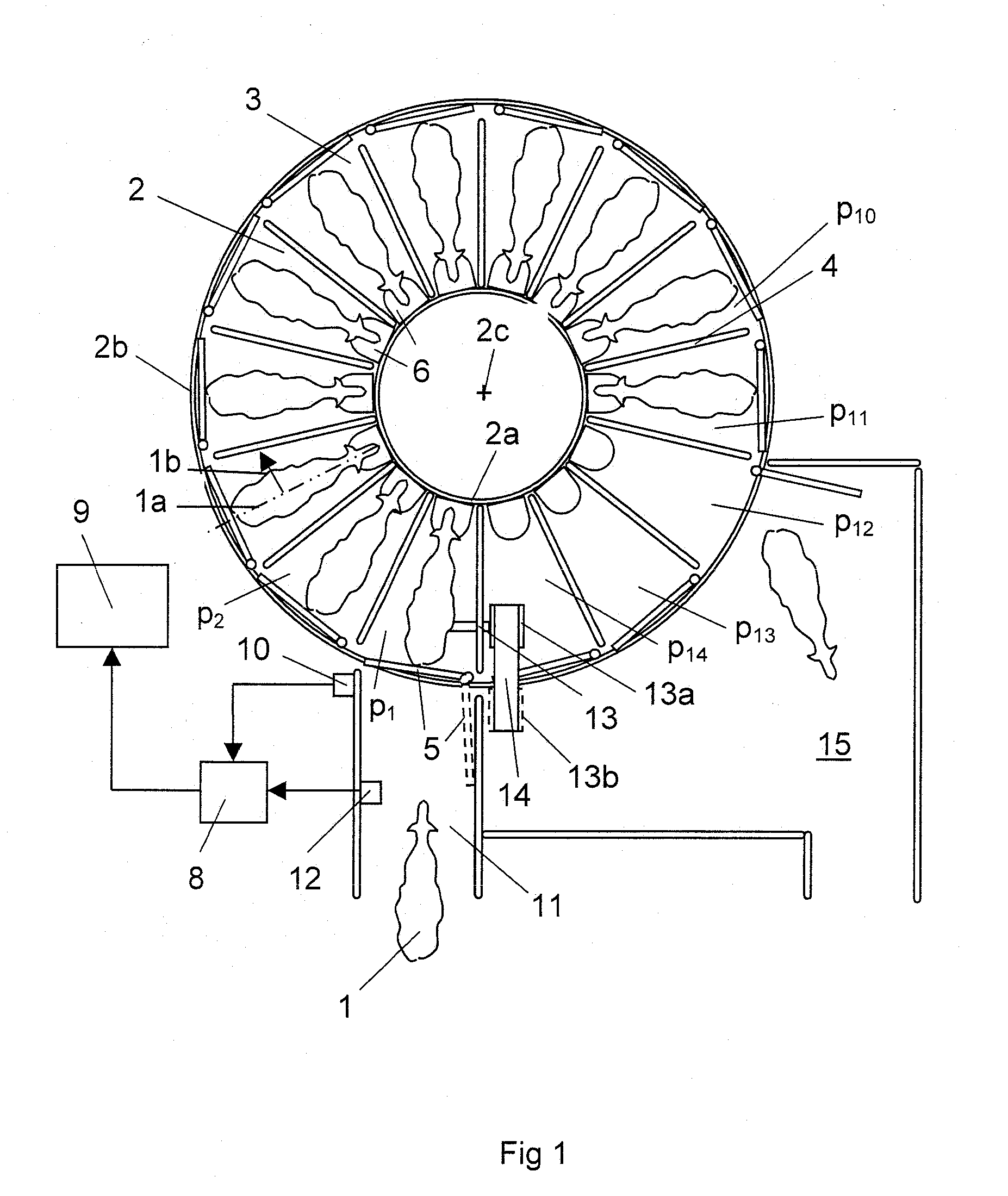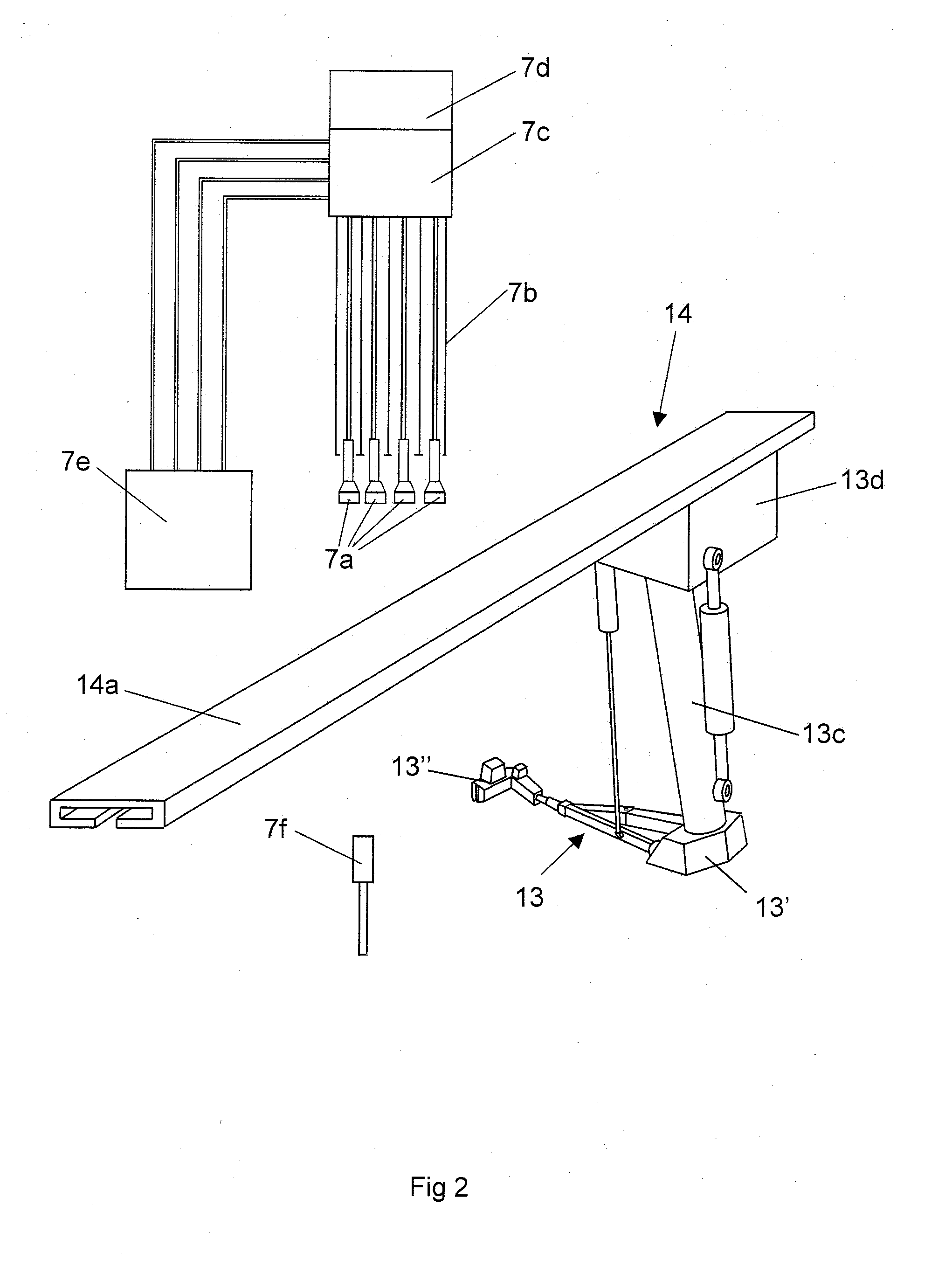Rotary parlour for automatic milking of animals
a technology of automatic milking and parlour, which is applied in the field of rotary parlour for automatic milking of animals, can solve the problems of insufficient space for the accommodation of an entire robot arm and relatively short displacement of the robot arm between the working position, and achieve the effect of facilitating the desired positioning of the animals, reducing the use of fence arrangements on the platform, and reducing the use of fence arrangements
- Summary
- Abstract
- Description
- Claims
- Application Information
AI Technical Summary
Benefits of technology
Problems solved by technology
Method used
Image
Examples
Embodiment Construction
[0018]FIG. 1 shows a rotary parlour for milking of cows 1. The parlour comprises a rotary annular platform 2 having an inner periphery 2a and an outer periphery 2b. The platform 2 rotates around a vertical axis 2c. The platform 2 is arranged to form a support surface for cows 1 during a milking process. The rotary parlour comprises fence arrangements 4 dividing the platform 2 into milking stalls 3 for receiving individual cows 1 in predetermined milking positions. The fence arrangements 4 are arranged at equal intervals around the annular platform 2. The fence arrangements 4 have an essentially straight radial extension on the platform between an inner end located at the vicinity of the inner periphery 2a of the platform and an outer end located at the vicinity of the outer periphery 2b of the platform. In this case, fourteen fence arrangements 4 are used, dividing the platform into fourteen milking stalls 3.
[0019]Each milking stall 3 is provided with a gate 5 at the outer periphery...
PUM
 Login to View More
Login to View More Abstract
Description
Claims
Application Information
 Login to View More
Login to View More - R&D
- Intellectual Property
- Life Sciences
- Materials
- Tech Scout
- Unparalleled Data Quality
- Higher Quality Content
- 60% Fewer Hallucinations
Browse by: Latest US Patents, China's latest patents, Technical Efficacy Thesaurus, Application Domain, Technology Topic, Popular Technical Reports.
© 2025 PatSnap. All rights reserved.Legal|Privacy policy|Modern Slavery Act Transparency Statement|Sitemap|About US| Contact US: help@patsnap.com



